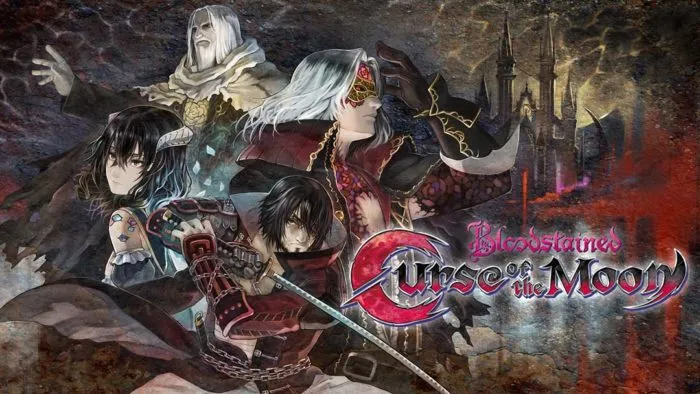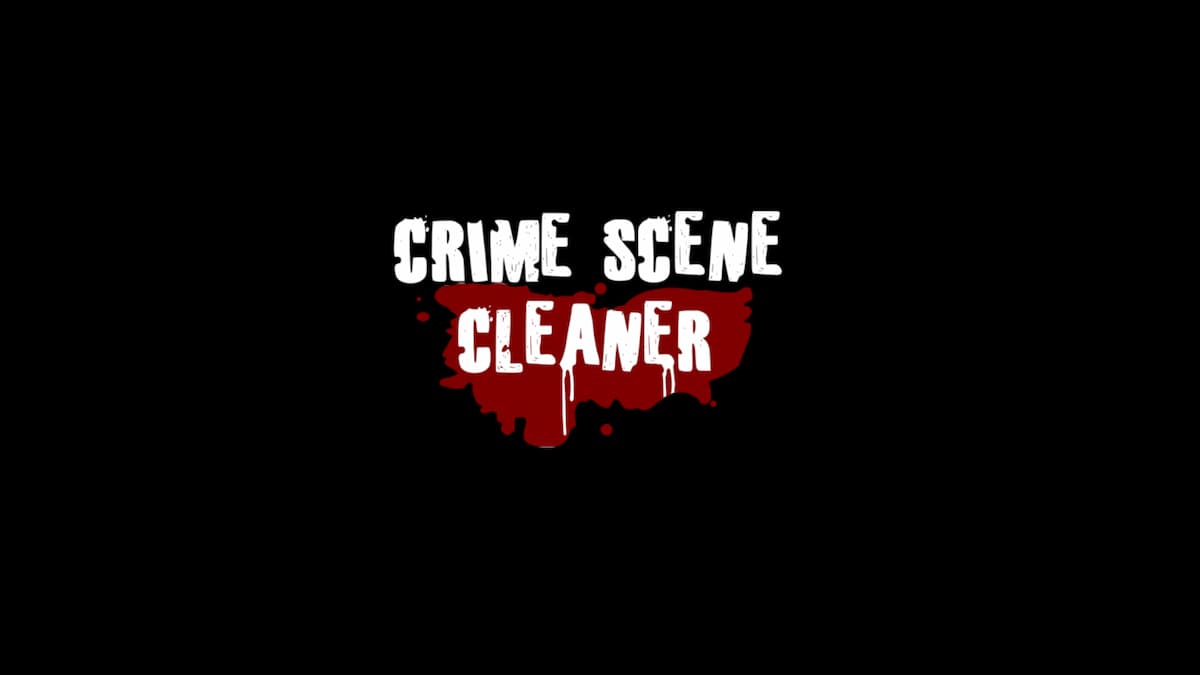Bloodstained: Curse of the Moon on PC
When Koji Igarashi created the Kickstarter campaign for Bloodstained: Ritual of the Night, one of the stretch goals was a an 8-bit mini-game that would serve as the prequel to Ritual of the Night. The campaign blew past all of its stretch goals, so much so that Bloodstained: Ritual of the Night is currently the second most funded Kickstarter video game campaign in history. Obviously, the mini-game stretch goal was unlocked and highly anticipated. Somewhere and somehow, though, the mini-game switched from a prequel to a spin-off, but that doesn’t really matter because Bloodstained: Curse of the Moon is a glorious callback to Castlevania games of yore.
Many gamers liken Bloodstained: Curse of the Moon to Castlevania III: Dracula’s Curse. While I never played that game in particular, I played enough of the first Castlevania game to say that Curse of the Moon perfectly recreates the classic NES aesthetic. Character and enemy sprites are simple but detailed enough to have a hint of personality, and the animations are basic in a good way. The environments are simple, but they’re also vibrant. More importantly, their color palettes mimic the limited colors available to NES games and stand out from the character and enemy sprites so players never lose track of anyone’s position. Oh, and I have to give special mention to the chiptune tracks, because they are simply magnificent. They’re nothing more than recreations of songs that will be featured in Ritual of the Night, but they help set the mood and are quite memorable. Curse of the Moon even accurately simulates screen tearing that was sometimes present in NES games. Or maybe there was something wrong with my computer’s VSync? Even if it was unintentional, it helped me imagine playing Bloodstained: Curse of the Moon on an old NES console (I know I have it around here somewhere).

Now, enough of my gushing over the presentation of Bloodstained: Curse of the Moon. How does it play? In a word, beautifully. When I said the game recreates the classic NES aesthetic, I didn’t just mean in terms of graphics and sound. Curse of the Moon plays exactly like an old Castlevania game. The game is split up into short levels, each with its own aesthetic, enemies, and challenges. Some levels are fairly straightforward and don’t offer much more than good old platforming challenges, while others add in hazards like teleporting platforms, gusts of wind that make jumping over gaps extra difficult, and swarms of bats that are bound to enrage anyone who had trouble on Flash Man’s stage in Mega Man II. Levels are generously populated with lamps that any Castlevania gamer will instinctively attack, as they provide extra health, sub-weapons, energy to use the sub-weapons, and extra points. And yes, some walls are destructible and hide hidden items. Moreover, each level features branching pathways that will keep completionists exploring for hours. Some optional paths feature rooms that, while challenging, are technically shortcuts, but others are completely barred off unless players have access to a specific character.
Bloodstained: Curse of the Moon’s gameplay revolves around switching between the characters Zangetsu, Miriam, Alfred, and Gebel. Each has his or her own strengths, weaknesses, and unique sub-weapons (most of which will feel familiar to Castlevania veterans). Zangetsu is a basic jack-of-all-trades character with a short sword attack and high health. Miriam, meanwhile, will feel right at home with any Castlevania veteran with her long-range whip, high jump, and slide ability. Alfred is the most situational and trades in health and efficacy in combat for devastating magical spells. And finally, Gebel features a unique attack that spreads diagonally and turns into a bat in favor of using sub-weapons. Other than Zangetsu, each character is unlocked by playing through the game. Unless players sacrifice these characters for new abilities. Yes, that is an actual option, and it affects the ending of the game. Plus it kinda locks players out of collectible power-ups that permanently increase each character’s health, power, defense, and energy.

Each character has his or her own health bar, and players need to carefully monitor these bars and switch out when one character is close to death. When one character dies, players lose their unique abilities until everyone else dies. If, for example, Alfred dies, players will no longer be able to use magic to get past otherwise invincible enemies that bar progress with their bodies. And characters will die, be it from an errant enemy or a plunge into a bottomless pit. This adds to the challenge and the frustration of the game, as some pathways are designed with specific characters in mind, which means losing that one specific character could handicap all but the most skilled of players. On the bright side, though, deaths are mostly fair. Odds are if a character dies in Bloodstained: Curse of the Moon, it’s the player’s fault.
As this game is supposed to recreate classic Castlevania games, that also applies to the difficulty. The game is hard. Fair, but hard. Enemies and bosses have attack patterns that are easy to memorize, but they will severely punish players who get too cocky. Plus, since each character has their own strengths and weaknesses, some are more suited to different challenges/scenarios than others. Gebel, for example, can turn into a bat and bypass otherwise challenging platforming obstacles. He’s also ideal for taking out enemies who camp at the top of stairs. Meanwhile, Alfred has access to more than a few screen-clearing abilities for those times when rooms are literally crawling with monsters. Again, odds are if a character dies because the player picked the wrong character, that’s on the player’s head. Usually.
A good chunk of the game’s challenge comes from its emulation of classic Castlevania. Jumps have momentum, which means players can’t change direction in mid-air; once a character leaps off the ground, players no longer have any control and have to pray they will land on, well, land. Likewise, any and all attacks have a slight and intentional delay. Players have to properly time the swings of their swords or whips, and if an enemy bumps into a character, he or she will be knocked out of the attack animation. And like any good Castlevania-esque game, characters are knocked back when they are attacked, which means that, given the number of narrow platforms and bottomless pits in Curse of the Moon, a mistimed jump onto a platform and into an enemy will send a character careening into oblivion. Of course, this only happens on Veteran difficulty. The game comes with a Casual difficulty that removes knockback and gives players infinite lives, so players who are overly frustrated by enemy placements (which, as in Castlevania, are placed with care to ensure fairness and to add a challenge), can play on Casual difficulty for a more laidback experience.

The difficulty doesn’t end there, though. After finishing the game on Normal mode, players unlock Nightmare mode. It’s kinda the same as Normal mode but with all the unlockable characters ready and raring to go. Plus it’s technically a continuation of the game’s story, even though it just repeats most of the stages from Normal mode. It does, however, provide slightly more challenging bosses and a vastly different final level/boss. And one heck of an ending.
Judging by my description, you might assume that Bloodstained: Curse of the Moon is almost perfect. Well, not quite. As I’ve already stated, the death system isn’t terribly balanced, especially since characters don’t regain their health when another character dies, which can leave players with a party that drops like flies. Additionally, some obstacles don’t have any indication they can be attacked. This makes sense for breakable walls, but it’s especially annoying during boss fights since not attacking the attackable obstacles leads to some of the game’s few cheap deaths. However, my biggest gripe is that in order to unlock all the modes and get all the endings, you have to play through the game multiple times. I was able to play through the Normal and Nightmare modes, but by the time I played through Normal mode a second time to unlock the final mode, things started feeling a little stale. Of course, your mileage may vary. Some gamers out there like that kind of repetitive challenge, but others may not.
Aside from the repetition, which is, in retrospect, how many gamers got longevity out of old Castlevania games, Bloodstained: Curse of the Moon is a superb game. It is ideal for gamers who want an old-school challenge as well as an old-school game in both aesthetic and design. If Inti Creates put this much effort into a spin-off, imagine what Bloodstained: Ritual of the Night will be like.
Score: 4/5 – Great
Pros
| Cons
|














Updated: May 28, 2018 11:29 am